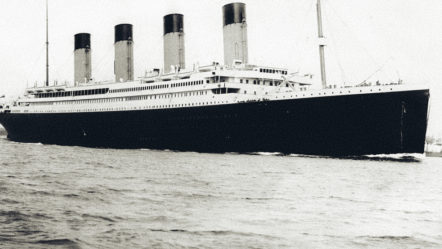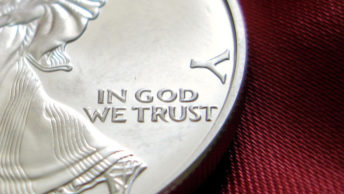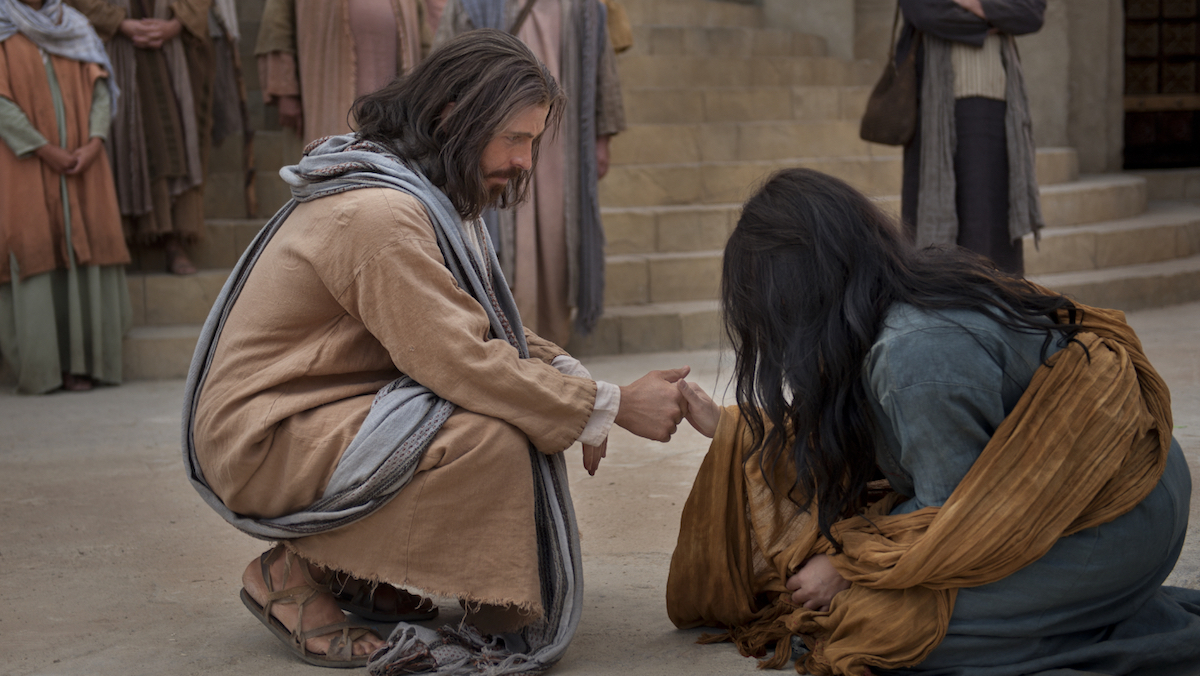The Publix near us usually runs out of its few copies of the SaturdayWall Street Journal edition, which regularly includes Peggy Noonan’s column. Some weeks ago, I had the good fortune of picking up a copy. It was serendipitous since for the 4th time, she inspired me to write an essay for this venue. I think this qualifies her as my unofficial muse.
In the last four years, she has moved me to write Peggy Noonan and Conspiracism, Moon River and Me, and The First Taste of Good and Evil. Her recent inspiration came from her column, Why the Titanic Keeps Drawing Us. It was truly representative of the kind of articles that I await from her. Her own muse touched her when she read about the implosion of the submersible submarine, the Titan.
I think Noonan has a deep and very creative imagination that stems from her Catholic faith. She sees things with a more universal perspective. I think she is one of the best writers for separating life’s truth from its fantasy. This is especially true when she alludes to hers and my favorite literary garden. I am referring to the Garden of Eden, whose depiction in Genesis is one of the most important contributions to history, theology, psychology and metaphysics ever conceived. The phrase and ye shall be like gods, resonates through every fiber of our being. That idea seems to be stuck in the pit of both our souls.
Like most of the people she described, I have been drawn to the bright lights of disaster, mystery and mythology that have surrounded the sinking of the RMS Titanic, the once magnificent vessel of the White Star Line. This legendary ship, was not completed until April 2, 1912. Eight days later it began its ill-fated maiden voyage from Southampton, England to New York City. Five days later, its image was splashed over every newspaper headline around the world.
My introduction to this historical event was getting a bubble gum card with a picture of the sinking ship in the Atlantic Ocean. These cards were in a unique set that were quite different from the usual baseball cards that dominated the market of my youth. They depicted several events from American history, such as Lincoln’s assassination, the stock market crash in 1929 and the explosion of the Hindenburg dirigible in 1937. On their reverse side, instead of the usual baseball statistics, they included a historical synopsis of the event pictured. I remember it because I had never heard of the Titanic.
As an adult, I read a few books on the subject, saw three movies and the Broadway play, a musical called Titanic in 1997. Since it was virtually impossible to recreate the actual vessel on a small stage, in order to lend a modicum of realism, the producers introduced an artificial wave effect where real water was splashed all over the stage. The people in the first three rows had been advised to bring rain gear.
One of the films was The Unsinkable Molly Brown, featuring the perky Debbie Reynolds, who played the gold heiress from Colorado. This was followed by the blockbuster movie, Titanic, also produced in 1997. The film had an array of stars, led by Kate Winslet and Leonardo DiCaprio that turned the disaster into a veiled modern take on Romeo and Juliet. It was a gripping account of the film whose last several minutes were a nail-biting rendition of the 2200 passengers who hit the icy waters of the North Atlantic Ocean. By most counts 1514 passengers lost their lives. After the ship’s remains had been found in 1985, director James Cameron had taken a Russian submarine to visit the site. He quickly realized after the ship had emerged from the shadows of its watery grave that It wasn’t just a story, it wasn’t just a drama. It was like a great novel that really happened.
Noonan says that the film perfectly captured nearly everything that at the exact point that it happened. The ship was built by the British but it was the American imagination it most captured. It highlighted the class consciousness, especially the wealthy in first class with its Gilded Age aristos and plutocrats…None were ashamed to display their wealth, their jewels or fancy clothes. In second class were the regular people, followed by the poor and their many children in steerage.
While the ship was sinking, people in all classes showed their true character or lack of. Grown men disguised themselves as women to get into the few life boats. Others tried to save helpless passengers at the risk of their own lives. Most notable among the survivors was J. Bruce Ismay. Ismay was the managing director of White Star Line.
Ismay has been depicted as the one who pressured the captain, Edward Smith into going faster than was prudent, so as to arrive in New York ahead of schedule. He quite probably was hoping to garner some free press about the new liner. This contradicts the company’s boast that the Titanic was built for comfort, not for speed. Though he was one of the last to get into a life boat, many said some women and children were left behind. Consequently, he has been universally maligned by the media as a villain. While he left the ship, Captain Smith went down with it. Though cleared of any wrong-doing, Ismay never recovered his reputation from the disaster.
I read in a book that the highest death rates occurred in third and first class. The spirit of noblesse oblige was considered a virtue among the wealthy and probably explains this. Ida Strauss gave up her seat to stay with her husband Isador out of love and loyalty. They were the co-owners of Macy’s Department store. The band played on until their instruments were swept away. One surprising omission was that of Thomas Byles, an English Catholic priest who was briefly depicted in the film in his role as leading a throng of the faithful in prayer just before the deadly waters swept them all away.
Cameron’s movie had been preceded by Walter Lord’s classic book, written in 1955, A Night to Remember and an eponymous movie, based on his book in 1958. Lord further contributed to the growing Titanic legacy with another book after the discovery of the ship’s remains. There have been close to a dozen other films based on this tragedy. But for many different reasons this disaster has had a special lure that raises visions of the wailing Sirens that tormented Ulyssis, tied to his mast, on his adventurous journey home to his wife. Their cries have turned a tragedy into an obsession that still lingers in our national ether.
Cameron’s Titanic has carried its legend and lore to new generations of filmgoers, who probably missed the moral lessons instilled within its flooded decks. In Noonan’s thinking, the story of the Titanic’s hitting of the iceberg has Biblical roots. It is intimately linked to themes as old as mankind. Pride goes before a fall or a calamity. The builders and owners fearlessly boasted that God himself could not sink this ship, so great was their pride in their technological creation. If we eat the fruit against His command then we will be in charge. Other short-lived adages include, technology will transform the world, so why dwell on the downside? In effect it was human nature that set up the weaknesses that such a natural barrier would result in this human disaster. The iceberg was just an obstacle that the ship could have weathered, had not its creators become blind to their own greed and shortsightedness.
It is all the same story with the Titan. Rear Admiral Chris Parry of the Royal Navy sums it up neatly. He questioned why anyone in his right mind would get into a dodgy piece of technology like the submersible. It is fundamentally dangerous, there was no backup plan, it was experimental, and I am afraid to say there’s an element of hubris, if you want to go down and do that. So many people today believe bad things cannot happen to them and as Noonan states, Everyone thinks he’s unsinkable. This explains the widespread popularity for adventure tourism. Everyone is just looking for the latest big thrill, without considering the risks involved.
Noonan believes that the Titanic story has it all. Splendor and perfection, meet a sudden and sharp demise. Life is fleeting and it can end like a brief candle that is quickly snuffed out, especially given the unforgiving forces of nature. Noonan also believes that the Titanic was what historians call a watershed event. It clearly separated the last splendorous and frivolous vibes of the 19th century, history knows as the Gilded Age. I was recently reminded of the connection of the popular PBS series, Downton Abbey and the Titanic. The first episode starts with the tragic loss of both James and Patrick Crawley, the heirs of the Grantham estate. It also signals the cultural changes that surround the family throughout its six seasons and two movie sequels.
Noonan’s friend, John Gardner illustrates this idea when he noted that the long-lasting fascination with the doomed ship had to do with the public mind’s connection to World War I. The 20th century was predicted to be one of social and technological progress. Peaceful prosperity in Europe made it way beyond war. Science and technology had dominated as they were the world’s newly ordained gods. The new age of psychotherapy led by a Viennese doctor, Sigmund Freud, took away guilt and with it the need for a God-centered religion. Man had finally arrived at its peak and now could reign in the Pantheon with his divine peers. It was Genesis personified.
Any hope of this kingdom materializing was rudely dashed on a June day in 1914 when an Archduke and his consort were assassinated. Universal peace and prosperity had exposed its fragile nerves and collapsed like a House of Cards, quickly tumbling to the earth with the vibrations of the Guns of August. Not unlike the failure of the Titanic to live up to its expectations, in the capitals of Europe, great miscalculations, sautéed in national pride, yielded a bloody disaster that cost millions their lives. According to Peggy Noonan the glittering failure of a glittering Titanic came to be seen as carrying wealthy, self-satisfied people that went down one night in April, a premonition of all that, the end of an old world.
Noonan does not just leave her essay here. She has to find a mysterious ending to this age-old story of mankind and its fatal flaw for self-love. She says that art sometimes heralds what’s coming. I take this to mean that God’s Divine Providence often leaves a trail of omenic bread crumbs that be may easily be perceived by the hungry curious.
Two days after I read her article, a popular cartoon reinforced her argument. The first panel said email, what could go wrong? ( I got hacked!) the second one: social media, what could go wrong? ( All I see is hateful and angry posts!) The last one: AI: What could go wrong? (To be continued.)
As good as the Titanic’s faith in its technology was, once it rammed a huge iceberg that mysteriously appeared out of nowhere, all bets were off. This reminded me of an old margarine commercial for Chiffon, where an actress in a long flowing gown and a tiara of fresh white flowers in her hair was angry because she thought it was nature’s butter. So she turned the green forest into a desert, snarling, It was not nice to fool Mother Nature. Could the iceberg have been an adverse Deus ex machina that sealed their fate and chastised those who boasted about their god-like talents? Or something else?*
In the foreword to Walter Lord’s A Night to Remember, the first thing he notes is that a struggling writer, named Morgan Robertson wrote a novel in 1898 about a fabulous Atlantic Ocean liner that went down on a cold night in April after running into an iceberg. The ship he described was almost identical to the Titanic in tons displacement, length, speed and passenger numbers. Neither had enough lifejackets for its passengers and crews. But none of this mattered since Robertson’s fictitious ship was unsinkable. The ship’s name?The Titan.
It was as if entrepreneurs had learned nothing from 1912. The same kind of arrogance dominated Titan owner and pilot Stockton Rush who thought he was some kind of Maverick disrupter like Elon Musk. This constant hubris that seduced men like him, who were hooked on Eden and its promise, never seems to change. They always fail to learn anything from the past. This is why my essay was entitled A Parable for All Times.
*Historical accounts reveal that there were several warnings about icebergs on the ship’s radio but for some inexplicable reason they were never reported to the bridge. Perhaps it is facts like this have led to speculations that imply a much darker mystery. William Federer reported in his AmericanMinute.com that of the Titanic’s 1514 fatalities, in addition to Isa Straus, John Jacob Astor IV and Benjamin Guggenheim also died. Besides being very wealthy, all three had opposed the creation of the Federal Reserve Bank,** which has been a thorn in the side of the American economy ever since. Coincidence? This is probably equal to the fact that exactly 47 years since Lincoln’s death on April 15th, the Titanic sank.
**It is hard to admit coincidence, when the Fed or Central Bank is found in Marx’s Communist Manifesto as one of his 10 most important proposals, like the public school and the progressive income tax.








